Inhibitory G proteins play multiple roles to polarize sensory hair cell morphogenesis
- PMID: 38651641
- PMCID: PMC11037916
- DOI: 10.7554/eLife.88186
Inhibitory G proteins play multiple roles to polarize sensory hair cell morphogenesis
Abstract
Inhibitory G alpha (GNAI or Gαi) proteins are critical for the polarized morphogenesis of sensory hair cells and for hearing. The extent and nature of their actual contributions remains unclear, however, as previous studies did not investigate all GNAI proteins and included non-physiological approaches. Pertussis toxin can downregulate functionally redundant GNAI1, GNAI2, GNAI3, and GNAO proteins, but may also induce unrelated defects. Here, we directly and systematically determine the role(s) of each individual GNAI protein in mouse auditory hair cells. GNAI2 and GNAI3 are similarly polarized at the hair cell apex with their binding partner G protein signaling modulator 2 (GPSM2), whereas GNAI1 and GNAO are not detected. In Gnai3 mutants, GNAI2 progressively fails to fully occupy the sub-cellular compartments where GNAI3 is missing. In contrast, GNAI3 can fully compensate for the loss of GNAI2 and is essential for hair bundle morphogenesis and auditory function. Simultaneous inactivation of Gnai2 and Gnai3 recapitulates for the first time two distinct types of defects only observed so far with pertussis toxin: (1) a delay or failure of the basal body to migrate off-center in prospective hair cells, and (2) a reversal in the orientation of some hair cell types. We conclude that GNAI proteins are critical for hair cells to break planar symmetry and to orient properly before GNAI2/3 regulate hair bundle morphogenesis with GPSM2.
Keywords: G proteins; cell polarity; developmental biology; hair cell; hearing; inner ear; mouse; planar polarity.
© 2023, Jarysta et al.
Conflict of interest statement
AJ, AT, MD, BK, BL, MW, BT No competing interests declared
Figures
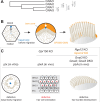
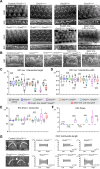



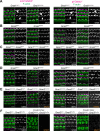

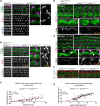



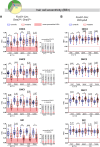
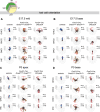
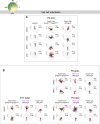
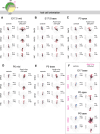

Update of
-
Inhibitory G proteins play multiple roles to polarize sensory hair cell morphogenesis.bioRxiv [Preprint]. 2024 Jan 6:2023.05.25.542257. doi: 10.1101/2023.05.25.542257. bioRxiv. 2024. Update in: Elife. 2024 Apr 23;12:RP88186. doi: 10.7554/eLife.88186. PMID: 37292807 Free PMC article. Updated. Preprint.
References
-
- Beer-Hammer S, Lee SC, Mauriac SA, Leiss V, Groh IAM, Novakovic A, Piekorz RP, Bucher K, Chen C, Ni K, Singer W, Harasztosi C, Schimmang T, Zimmermann U, Pfeffer K, Birnbaumer L, Forge A, Montcouquiol M, Knipper M, Nürnberg B, Rüttiger L. Gαi proteins are indispensable for hearing. Cellular Physiology and Biochemistry. 2018;47:1509–1532. doi: 10.1159/000490867. - DOI - PMC - PubMed
-
- Bhonker Y, Abu-Rayyan A, Ushakov K, Amir-Zilberstein L, Shivatzki S, Yizhar-Barnea O, Elkan-Miller T, Tayeb-Fligelman E, Kim SM, Landau M, Kanaan M, Chen P, Matsuzaki F, Sprinzak D, Avraham KB. The GPSM2/LGN GoLoco motifs are essential for hearing. Mammalian Genome. 2016;27:29–46. doi: 10.1007/s00335-015-9614-7. - DOI - PMC - PubMed
Publication types
MeSH terms
Substances
Grants and funding
LinkOut - more resources
Full Text Sources
Molecular Biology Databases
Miscellaneous

